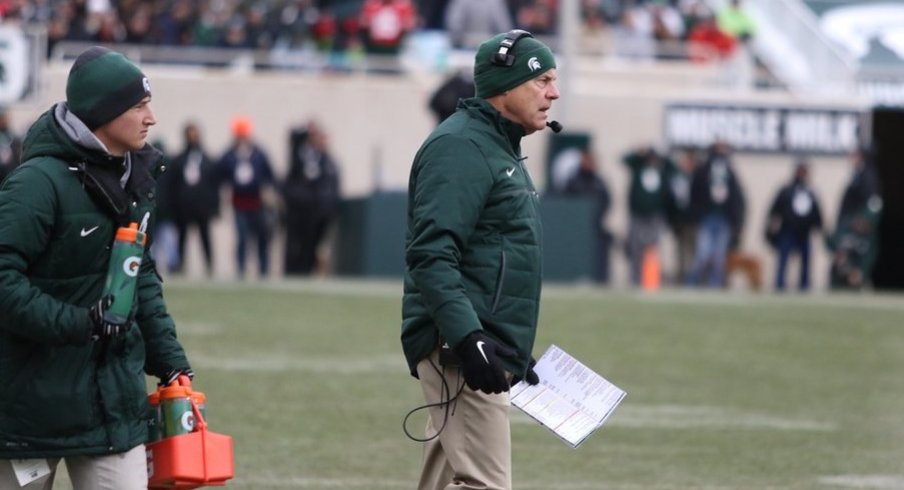I kind of feel bad for Michigan State.
Moving on from a legendary coach is difficult. Ohio State fans know this better than most; the Buckeyes have lost two iconic coaches in the last 10 years alone.
Mark Dantonio was the true embodiment of Michigan State. His rosters were full of hard-nosed players that wanted nothing more than to run the ball down your team's throat. The Spartans once won the Big Ten Championship and clinched a playoff spot by holding the ball for over nine minutes and running the ball 12 straight times (while trailing!) to win the game with 27 seconds left on the clock.
That moment would be one of the best of his career. The following year, his mighty Spartans would win just three games and finish last in the Big Ten East. Now, in 2020, he has resigned from East Lansing, a place he has called home since 2007.
Dantonio, 63, became a beacon of excellence for the green-and-white faithful. He is walking away as the winningest coach in Michigan State's history and was able to lead it above the school's brother in blue for the majority of his tenure.
Then again, his departure isn't exactly shocking, because we have all heard this song before.
Currently, the Big Ten has just three active head coaches that have been with their current program for more than five years. Half of the Big Ten's coaches are under the age of 50. And up until Monday morning, it was expected that the new head coach in East Lansing would be Luke Fickell.
Fickell's path to Michigan State would have been almost identical to Dantonio's, but he also epitomizes many of the recent head coaching hires made by Big Ten athletic departments in the past five years. He is a younger, energetic coach who is consistently competing for conference titles at a Group of Five program. In the last half-decade, this path mirrors that of Scott Frost, P.J. Fleck, and Jeff Brohm.
The trend of going younger is not exclusive to the Midwest. Chris Petersen stepped away from Washington in December and was replaced by 43-year-old Jimmy Lake, who has no head coaching experience. Sean McVay and Kyle Shanahan, both 40 or younger, have each coached in the NFL's Super Bowl in the past two years.
The younger head coach movement has mirrored the evolution of football. Conservative teams are fading away as offense-heavy teams led by less-experienced coaches have started to pop up all across the nation. 39-year-old P.J. Fleck and Minnesota built a top-20 offense last year and 30-year-old coordinator Joe Brady transformed LSU from a run-heavy, defensive-led team to the greatest offensive team college football has ever seen.
Among the schools at the front of this youthful, offense-first movement, two programs stick out above the rest: Ohio State and Oklahoma. Each school handed the keys to its historic program to its young, offensive-minded coordinator with no head-coaching experience, and they have been reaping the rewards ever since. Both Ryan Day and Lincoln Riley have picked up where Urban Meyer and Bob Stoops left off to lead two of the best teams in the country.
Despite those trends, it feels unlikely that Michigan State will stray far from Dantonio's roots. The Spartans will probably be back to playing hard-nosed football once again this fall, but it may be time for a change. Since 2016, the Spartans have gone 27-24. Opposing offenses have became too explosive for Dantonio's slower-paced game, and his record suffered as a result. If the Spartans hire a similar coach to replace him, they risk being left behind.


